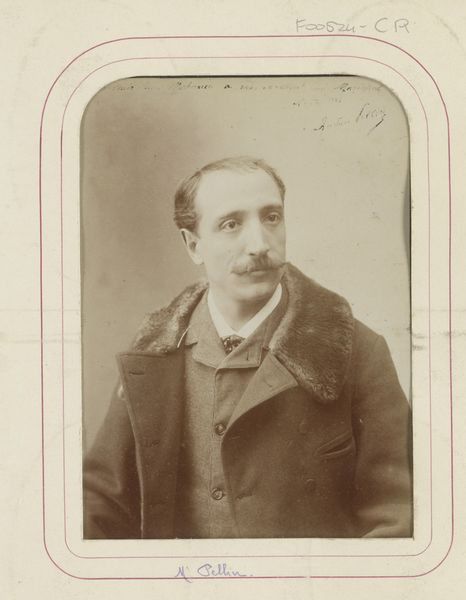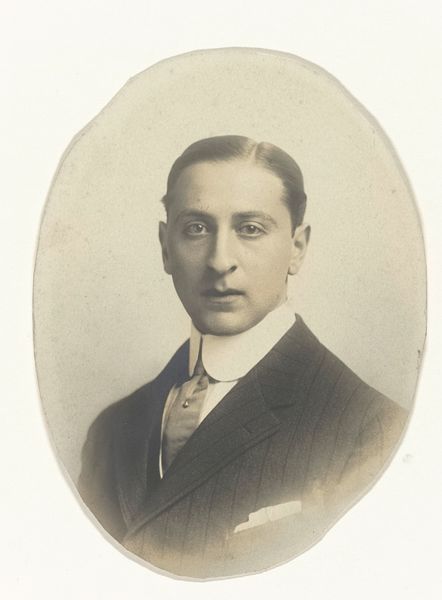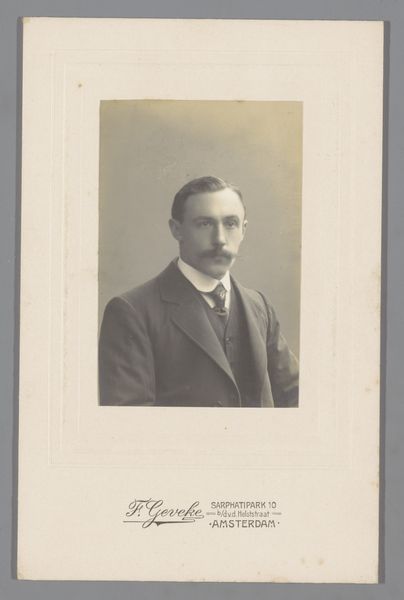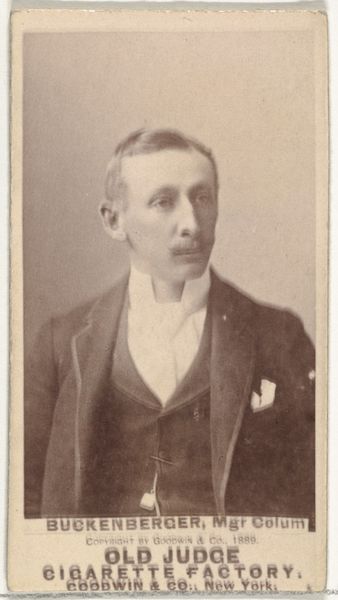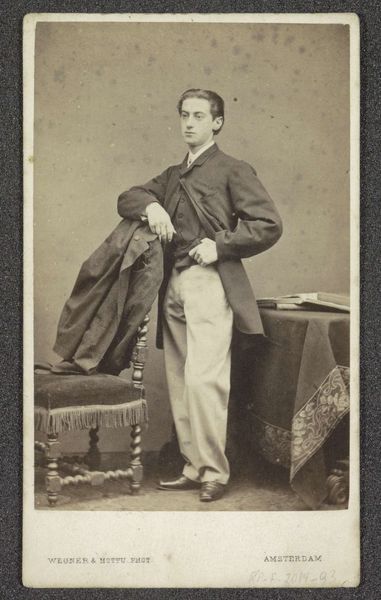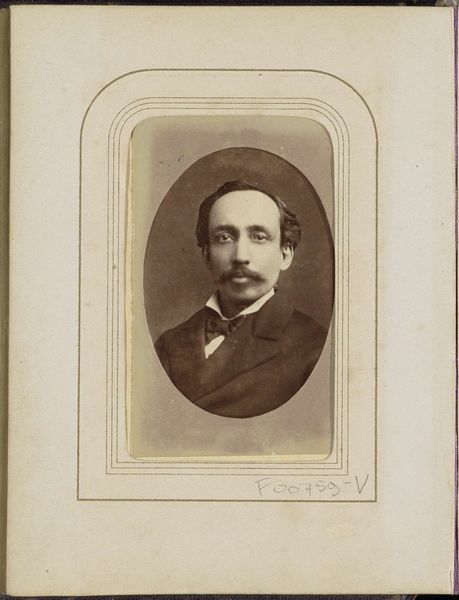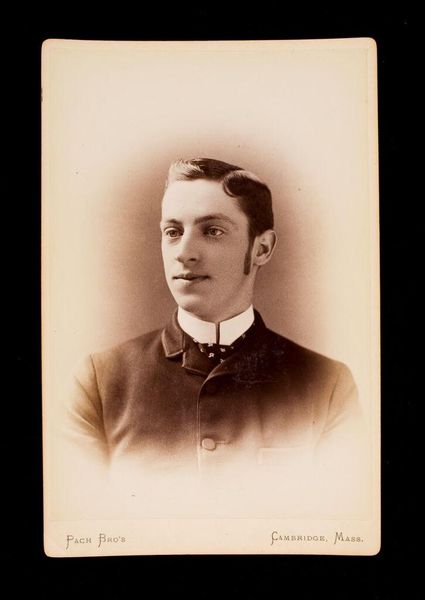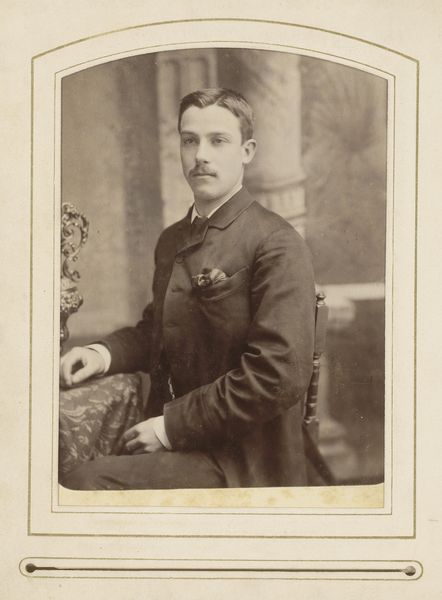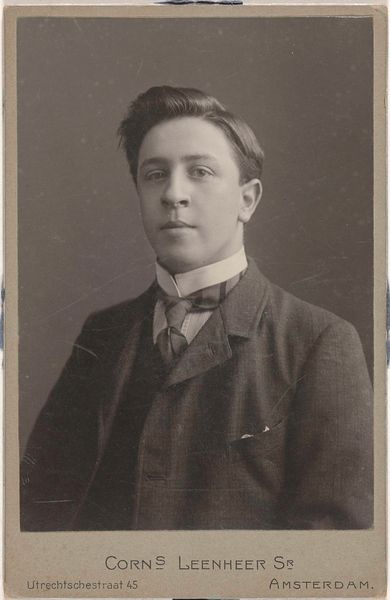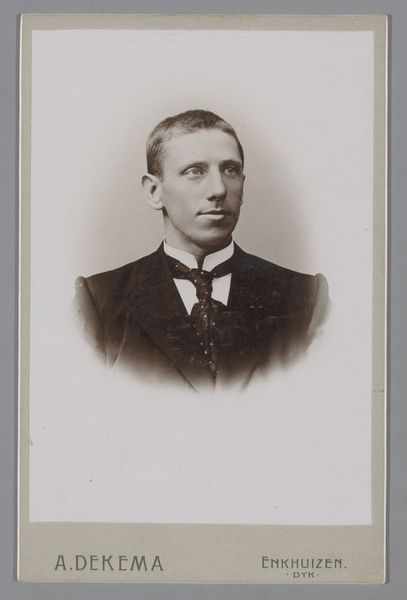
Dimensions: height 165 mm, width 110 mm
Copyright: Rijks Museum: Open Domain
Editor: This gelatin-silver print, titled "Photographs from the Estate of Isabel Wachenheimer," was taken by Pau Audouard in 1906. The subject's gaze and formal attire project an air of self-assuredness. How do we contextualize this portrait beyond its aesthetic appeal? Curator: Considering Audouard’s body of work, often portraying the bourgeoisie in Barcelona, this image becomes more than just a portrait. It is a statement about class and representation in early 20th-century Spain. Who was Isabel Wachenheimer, and what did her estate represent in that society? The image invites us to investigate the power dynamics inherent in portraiture itself. How does this staged depiction contribute to the construction—or perhaps the reinforcement—of societal hierarchies? Editor: I hadn’t considered it that way. I was primarily focused on the visual aspects of romanticism and academic art present, but thinking about the subject within her historical context certainly does change things. Curator: Exactly. Romanticism often idealized subjects, sometimes masking the realities of their social positions. By acknowledging these intersecting layers of representation, we can interpret the image not only as a singular depiction of an individual but also as a reflection of larger social and political systems at play. In what ways do you think that this picture might have challenged conventional stereotypes about gender or sexuality for that historical moment? Editor: Perhaps by displaying a male sitter in what may have been interpreted as a 'feminine' romantic style? I am now starting to see just how much this photograph opens up lines of inquiry! Curator: Precisely! It challenges us to deconstruct preconceived notions and engage with the portrait critically, prompting dialogue and a more profound awareness of intersectional histories and cultural values. Editor: Thank you! This photograph definitely gave me a broader perspective and made me reconsider portraiture, beyond pure aesthetics.
Comments
rijksmuseum about 2 years ago
⋮
The German Eugen Wachenheimer had a brilliant career at the Deutsche Bank and served as a naval officer in the First World War. In 1922 he married Else Moos. The Anti-Jewish laws instituted by the Nazi regime forced them to flee to the Netherlands in 1937. The photograph at the lower right is the last one taken of Eugen. He stands with his back to the camera behind his daughter. Eugen and Else were gassed at Auschwitz-Birkenau in 1944.
Join the conversation
Join millions of artists and users on Artera today and experience the ultimate creative platform.
